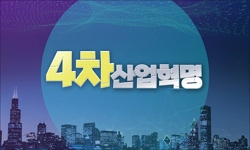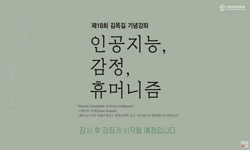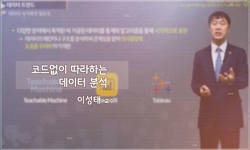로봇은 현재 4차 산업혁명을 선도하는 지능형기계시스템이다. 사람처럼 외부환 경을 인식하고 자신이 해야 할 행동을 결정한다. 여기에 필요한 로봇의 구성요소는 센서, 제어기, 인공지능, ...
http://chineseinput.net/에서 pinyin(병음)방식으로 중국어를 변환할 수 있습니다.
변환된 중국어를 복사하여 사용하시면 됩니다.
- 中文 을 입력하시려면 zhongwen을 입력하시고 space를누르시면됩니다.
- 北京 을 입력하시려면 beijing을 입력하시고 space를 누르시면 됩니다.
https://www.riss.kr/link?id=A108678447
- 저자
- 발행기관
- 학술지명
- 권호사항
-
발행연도
2023
-
작성언어
Korean
-
주제어
로봇 ; 인공지능 ; 빅데이터 ; 원상론 ; 윤리론 ; 이상세계 ; Robots ; Artificial Intelligence ; Big data ; Theory of the Original Image ; Ethics ; Ideal World
-
KDC
238
-
자료형태
학술저널
-
수록면
29-43(15쪽)
- 제공처
-
0
상세조회 -
0
다운로드
부가정보
국문 초록 (Abstract)
로봇은 현재 4차 산업혁명을 선도하는 지능형기계시스템이다. 사람처럼 외부환 경을 인식하고 자신이 해야 할 행동을 결정한다. 여기에 필요한 로봇의 구성요소는 센서, 제어기, 인공지능, 엑츄에이터 등인데, 본 논문은 통일사상의 원상론의 관점에 서 이러한 구성요소들이 하나님, 그리고 인류와 닮은 속성을 분석하였다. 원상론은 신상과 신성의 요소를 주로 설명하고 있으며 하나님의 형태와 그것을 이루는 궁극 적인 속성 등을 의미한다. 로봇이 가지고 있는 신상과 신성의 요소를 대응시켜 보면 완전히 가지고 있는 정도, 어느 정도 가지고 있는 정도, 그렇지 않은 요소 등으로 나누어 볼 수 있다. 하지만 인공지능의 발전 속도를 볼 때 앞으로 로봇은 신성과 신 상의 속성을 시간이 지날수록 더 많이 가지게 될 것이라고 예상할 수 있다. 이러한 로봇의 발전 속에서 현재 제어기에 적용되고 있는 인공지능과 이를 실체 적으로 전개하는 방식인 알고리즘의 윤리적인 이슈가 부각되고 있다. 통일사상에서 보면 신상과 신성의 속성을 갖춘 인류가 나아갈 길은 하나님을 중심한 이상세계 실 현이라고 제시하고 있다. 이를 통해서 로봇에도 이와 같은 내용이 적용 가능하고 인 공지능과 알고리즘에 필수적으로는 윤리의 개념이 적용되어야 한다고 볼 수 있다. 역사적으로 윤리론에 있어서 대표적인 철학자인 벤담, 칸트 등의 주장을 근거로 인 공지능의 사례를 살펴보고 통일사상의 윤리론을 통해 인류처럼 이상세계 실현을 위 해 제어기에 인공지능이 어떻게 적용되어야 하는지 제시하였다.
다국어 초록 (Multilingual Abstract)
The robot is an intelligent machine system leading the 4th industrial revolution. Like humans, they perceive the external environment and decide what actions they should take. This means that the components of the robot are composed of sensors, contro...
The robot is an intelligent machine system leading the 4th industrial revolution. Like humans, they perceive the external environment and decide what actions they should take. This means that the components of the robot are composed of sensors, controllers, artificial intelligence, actuators etc. From the perspective of the original theory of unification thought, the attributes similar to God and humankind were analyzed. Primitive theory mainly explains the divine image and the elements of divinity, and means the form of God and the ultimate attributes that make up it. Corresponding to the divine image and divine elements that the robot has, it can be divided into the degree to which it has completely, the degree to which it has to some extent, and the elements that do not. However, given the speed of development of artificial intelligence, it can be expected that in the future, robots will have more divine and divine attributes as time goes by. In the development of these robots, ethical issues of artificial intelligence currently applied to controllers and algorithms, which are the way to develop them substantially, are emerging. In the Unification Thought, it is suggested that the way forward for mankind equipped with divine images and divine attributes is the realization of an ideal world centered on God. Through this, it can be seen that the same content can be applied to robots, and that the concept of ethics must be applied to artificial intelligence and algorithms. Based on the historically representative philosophers of ethics, such as Bentham and Kant, we looked at cases of artificial intelligence and suggested how artificial intelligence should be applied to controllers to realize an ideal world like mankind through the ethics theory of unification thought.
목차 (Table of Contents)
- 국문요약
- Ⅰ. 도입부
- Ⅱ. 신상의 관점에서 본 로봇의 속성
- Ⅲ. 신성의 관점에서 본 로봇의 속성
- Ⅳ. 윤리론의 관점에서 본 로봇의 인공지능 구현
- 국문요약
- Ⅰ. 도입부
- Ⅱ. 신상의 관점에서 본 로봇의 속성
- Ⅲ. 신성의 관점에서 본 로봇의 속성
- Ⅳ. 윤리론의 관점에서 본 로봇의 인공지능 구현
- Ⅴ. 결론
- 참고문헌
- Abstract
동일학술지(권/호) 다른 논문
-
- 통일사상학회
- 김민지
- 2023
-
- 통일사상학회
- 이준
- 2023
-
보조생식술에 대한 세계평화통일가정연합의 생명윤리적 견해
- 통일사상학회
- 강명호
- 2023
-
독생녀를 맞기 위한 기대 섭리 연구 : 근세·근대 교회사를 중심으로
- 통일사상학회
- 양순석
- 2023




 eArticle
eArticle






